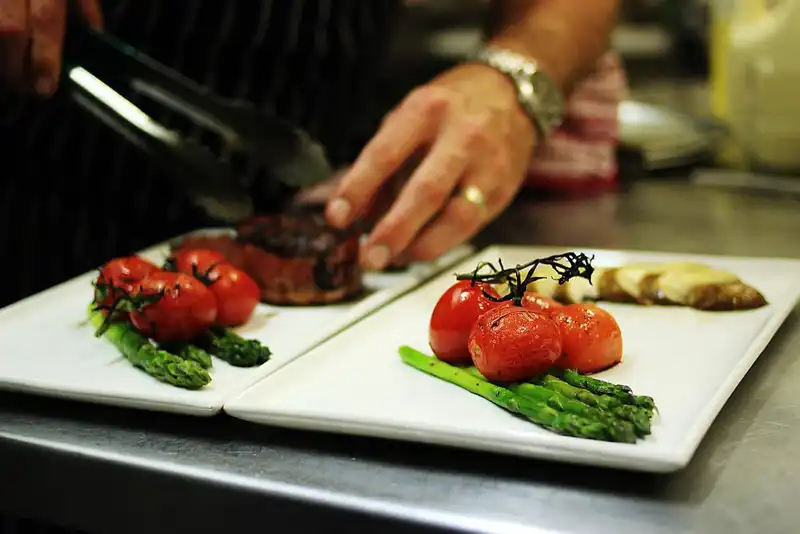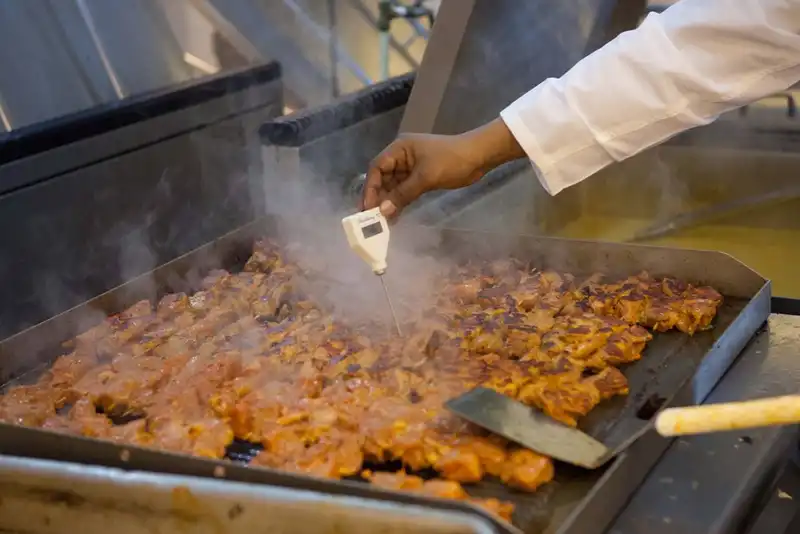The Importance of Food Safety Culture in Your Restaurant
What is a food safety culture?

Food safety culture refers to a food organization's commitment to food safety. It is also known as hygiene culture, and suggests that the daily actions of everyone involved in the food business must be directed towards ensuring the safety of the food that they produce and serve. It includes abiding by safety standards and wide-ranging food safety practices that make the quality of the food a restaurant's top priority. A strong food hygiene culture helps protect employees and customers from food-borne illnesses helps with building credibility and can avert financial losses. The culture of food safety must trickle down from the top to everyone working at the restaurant. Read on to know more about this buzzword in the food industry and how you can implement a strong food safety culture at your restaurant!
Why is a food safety culture important?

Creating a strong culture of food safety is important for several reasons. For one, it enables businesses in the food industry to meet regulatory standards set by the FDA, USDA FSIS and other third party food safety audits are at the core of running a food establishment. These processes and procedures help make food safety standards a reality. They also prevent the possibility of recalls thereby curbing lost sales and a decline brand equity. Most importantly, food safety culture protects your customers. It empowers food producers to create healthy, safe and sustainable meals that they are happy to take to their customers with confidence.
It’s important to have a team of staff who are passionate about keeping your customer’s safe
Hire staff who have a good understanding of food safety culture. Provide them with training on the importance of food safety culture in your restaurant
How to gain confidence in your food safety culture?

It is incredibly important for any food establishment to be confident in its food safety culture. This confidence can only be born from the knowledge that your team has embraced a food safety culture and understands the significance of abiding by food safety standards. However, if you are new to inculcating a strong food safety culture at your food establishment, there are certain strategies that can help you develop it.
For starters, it is essential that the top leadership understands the merits of a strong food safety culture. Once they are involved, the rest will follow. Getting the top leadership on board is especially important as the implementation of food safety practices require investments in resources, management systems, safety equipment, and personnel. The top leadership controls this and it thus becomes all the more important to involve them.
It is also important to create safety training programs for employees that teach them to handle food safely. This includes all the steps of food production prepping, cooking, and cleanup. This safety program must contain details on how to handle raw and cooked food differently, cooking temperatures, and storage practices that can severely impact food production.
While a good safety training program will equip your team with the knowledge required to handle food safely, it would mean little if they can't put it into practice. This requires equipment. Businesses in the food industry must not skimp on equipment and protective gear.
In addition to this, food establishments could also incentivize food safety and reward employees for abiding by set food standards and best practices. It also must be remembered that food safety culture is an ongoing goal and not something that can be achieved overnight. Food establishments, therefore, must remain flexible and committed to continuous improvement.
Ways to create a positive food safety culture?

The experience you offer your customers can make or break your business, especially in the food industry. Cultivating a strong food safety culture takes time and commitment but there are ways of ensuring this. Let's discuss the measures that can help you create a positive food safety culture below.
1. Management committee

The first step to creating a positive food safety culture in the food industry requires top management to show commitment to the objective. For starters, employers must insist on the personal hygiene of food handlers. This entails providing them with the right equipment, wearing the proper uniform, washing their hands regularly among others.
Food safety is an important issue for all restaurants, but it’s also a complicated one
We can help you create a food safety culture that will keep your customers safe and make your restaurant a safer place to work
2. Responsibilities

While trying to implement a Food Safety culture, it is also important to establish food safety responsibilities clearly so that every employee knows their role and can contribute to the company culture of safety and hygiene.
3. Resources

It is extremely important for any business in the food industry to ensure that its employees have access to the knowledge and resources required to maintain a strong Food Safety culture. This includes temperature control and monitoring equipment, protective clothing, cleaning chemicals, etc.
4. Communication and training

It is also important to ensure access to food safety training programs that can help new entrants understand food safety practices and procedures, and abide by them.
5. Monitoring and review

Once you have initiated the process of establishing a food safety culture in your organization, it is important to consistently monitor and review it to measure its success. This goes beyond ensuring due diligence. A reward system could further motivate employees to stick to food safety standards.
6. Constant improvement
When it comes to ensuring food safety, continuous improvement is the name of the game. Regular reviewing and monitoring will show you where you lack and help you improve your food safety practices.
What to include in your inspection checklist for food safety culture

A simple food safety checklist might seem like a simple tool, but can be extremely useful for
food safety management. It helps identify potential food safety risks, and ensure that action can be taken before things go out of hand. A checklist for food safety culture should answer at least the following questions in the affirmative-
Food Storage
- Are ready-to-eat foods stored/separated from raw foods?
- Is stock rooted daily?
- Do refrigerators and freezers work at the right temperature?
- Are high-risk foods date-coded?
Establishment
- Are the sinks for dishwashing and handwashing separate?
- Is the equipment cleaned regularly?
- Are storage areas cleaned regularly?
- Is a pest control system in place?
Food Handling
- Are the preparation areas for raw and ready-to-eat foods separate?
- Are the chopping boards for different kinds of foods separate?
- Are frozen foods thawed safely?
- Are vegetables/fruit/salads/ trimmed and washed thoroughly?
Employee Hygiene
- Do team members wear clean and protective clothing?
- Do workers wear a hairnet?
- Does the staff regularly wash their hands?
Food safety is a major concern for many people
You need to train your staff and ensure that they understand the importance of food safety culture in your restaurant


